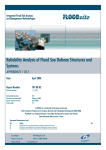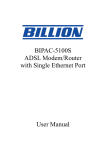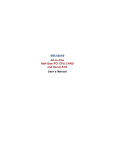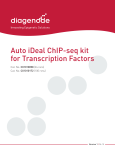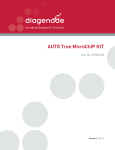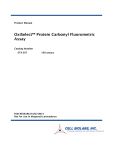Download RayBio® Human IgG1 ELISA Kit
Transcript
RayBio Human IgG1 ELISA Kit User Manual (Revised Mar 1, 2012) RayBio Human IgG1 ELISA Kit Protocol (Cat#: ELH-IGG1-001) RayBiotech, Inc. We Provide You With Excellent Protein Array System And Service Tel:(Toll Free)1-888-494-8555 or 770-729-2992; Fax:770-206-2393; Web: www.raybiotech.com Email: [email protected] RayBiotech, Inc. RayBio Human IgG1 ELISA Kit Protocol TABLE OF CONTENTS I. Introduction……..……………………………….2 II. Reagents……………………………..…………..3 III. Storage.…………………………………….…….3 IV. Additional Materials Required…………………..3 V. Reagent Preparation……………………………..4 VI. Assay Procedure……………………………....…6 VII. Assay Procedure Summary……………………...7 VIII. Calculation of Results A. Typical Data…..……………………….…….…..8 B. Sensitivity……………………………….….……8 C. Linearity………………………………….…........9 D. Reproducibility……………………….……….....9 IX. Specificity……………………………….…….…9 X. References…………………………………..…...9 XI. Troubleshooting Guide.……………………....…11 RayBio Human IgG1 ELISA Kit Protocol 1 I. INTRODUCTION The human immune system consists of two functional components classified as the innate system (the physical, biochemical and cellular barriers), and the adaptive immune system (including lymphocytes and immunoglobulins). Immunoglobulins are the key elements of the humoral immune response in vertebrate against parasitic invasion. The polypeptide chains of immunoglobulins composed of two identical heavy (H) chains and two identical light (L) chains linked together by inter-chain disulfide bonds. While the amino-terminal portions that exhibits highly variable amino-acid composition are involved in antigen binding, the C terminal constant parts are involved in complement binding, placental passage and binding to cell membranes. Based upon the variation of the constant region of the heavy chain, nine immunoglobulin heavy chain isotypes are found in humans: IgA (with subclasses IgA1 and IgA2), IgD, IgE, IgM, and IgG (with subclasses IgG1, IgG2, IgG3, and IgG4). IgG is the predominant immunoglobulin in the serum, which accounts for 75% of the total serum antibody of healthy individuals. IgG has a molecular weight of about 150 kDa. Four distinct subgroups of human IgG (IgG1, IgG2, IgG3, and IgG4) were first demonstrated in the 1960’s by using polyclonal antisera prepared in animals immunized with human myeloma proteins. The RayBio Human IgG1 ELISA (Enzyme-Linked Immunosorbent Assay) kit is an in vitro enzyme-linked immunosorbent assay for the quantitative measurement of human IgG1 in serum and plasma. This assay employs an antibody specific for human IgG1 coated on a 96-well plate. Standards and samples are pipetted into the wells and IgG1 present in a sample is bound to the wells by the immobilized antibody. The wells are washed and biotinylated anti-human IgG antibody is added. After washing away unbound biotinylated antibody, HRP-conjugated streptavidin is pipetted to the wells. The wells are again washed, a TMB substrate solution is added to the wells and color develops in proportion to the amount of IgG1 bound. The Stop Solution changes the color from blue to yellow, and the intensity of the color is measured at 450 nm. RayBio Human IgG1 ELISA Kit Protocol 2 II. REAGENTS 1. IgG1 Microplate (Item A): 96 wells (12 strips x 8 wells) coated with anti-human IgG1. 2. Wash Buffer Concentrate (20x) (Item B): 25 ml of 20x concentrated solution. 3. Standards (Item C): 2 vials of human IgG1. 4. Assay Diluent (Item E): 2 bottles of 15 ml 5x concentrated buffer. For Sample and reagent diluent. 5. Detection Antibody IgG (Item F): 2 vial of biotinylated anti-human IgG (each vial is enough to assay half microplate). 6. HRP-Streptavidin Concentrate (Item G): 200 µl 2,000x concentrated HRP-conjugated streptavidin. 7. TMB One-Step Substrate Reagent (Item H): 12 ml of 3,3’,5,5’tetramethylbenzidine (TMB) in buffer solution. 8. Stop Solution (Item I): 8 ml of 0.2 M sulfuric acid. III. STORAGE May be stored for up to 6 months at 2o to 8oC from the date of shipment. Standard (recombinant protein) should be stored at -20 oC or -80 o C (recommended at –80 oC) after reconstitution. Opened Microplate Wells or reagents may be store for up to 1 month at 2o to 8oC. Return unused wells to the pouch containing desiccant pack, reseal along entire edge. Note: the kit can be used within one year if the whole kit is stored at -20 oC. Avoid repeated freeze-thaw cycles. IV. ADDITIONAL MATERIALS REQUIRED 1 2 3 4 Microplate reader capable of measuring absorbance at 450 nm. Precision pipettes to deliver 2 µl to 1 ml volumes. Adjustable 1-25 ml pipettes for reagent preparation. 100 ml and 1 liter graduated cylinders. RayBio Human IgG1 ELISA Kit Protocol 3 5 Absorbent paper. 6 Distilled or deionized water. 7 Log-log graph paper or computer and software for ELISA data analysis. 8 Tubes to prepare standard or sample dilutions. V. REAGENT PREPARATION 1. Bring all reagents and samples to room temperature (18 - 25°C) before use. 2. Sample dilution: 1x Assay Diluent (Item E) should be used for dilution of serum/plasma samples. Suggested dilution for normal serum/plasma: 10,000,000 fold*. For example, add 1 µl of serum/plasma into a tube with 99 µl 1x Assay Diluent to prepare a 100-fold diluted sample. Mix through and then pipette 1 µl of prepared 100-fold diluted sample into a tube with 99 µl 1x Assay Diluent to prepare a 10,000 fold diluted sample. Mix through and then pipette 1 µl of prepared 10,000-fold diluted sample into a tube with 999 µl 1x Assay Diluent to prepare a final 10,000,000 fold diluted sample. *Please note that levels of the target protein may vary between different specimens. Optimal dilution factors for each sample must be determined by the investigator. 3. Assay Diluent should be diluted 5-fold with deionized or distilled water before use. 4. Preparation of standard: Briefly spin the vial of Item C and then add 600 µl 1x Assay Diluent into Item C vial to prepare a 300 ng/ml stock standard solution. Dissolve the powder thoroughly by a gentle mix. RayBio Human IgG1 ELISA Kit Protocol 4 Add 80 µl IgG1 standard (300 ng/ml) from the vial of Item C, into a tube with 520 µl 1x Assay Diluent to prepare a 40 ng/ml standard. Pipette 400 µl 1x Assay Diluent into each tube. Use the stock standard solution to produce a dilution series (shown below). Mix each tube thoroughly before the next transfer. 1x Assay Diluent serves as the zero standard (0 ng/ml). 80 µl standard + 520 µl 40 ng/ml 200µl 200 µl 13.3 ng/ml 4.44 ng/ml 200 µl 200 µl 1.48 ng/ml 200 µl 0.49 ng/ml 200 µl 0.16 ng/ml 0.05 ng/ml 0 ng/ml 5. If the Wash Concentrate (20x) (Item B) contains visible crystals, warm to room temperature and mix gently until dissolved. Dilute 20 ml of Wash Buffer Concentrate into deionized or distilled water to yield 400 ml of 1x Wash Buffer. 6. Briefly spin the Detection Antibody vial (Item F) before use. Add 100 µl of 1x Assay Diluent into the vial to prepare a detection antibody concentrate. Pipette up and down to mix gently (the concentrate can be stored at 4°C for 5 days). The detection antibody concentrate should be diluted 80-fold with 1x Assay Diluent and used in step 4 of Part VI Assay Procedure. 7. Briefly spin the HRP-Streptavidin concentrate vial (Item G) ) and pipette up and down to mix gently before use. HRP-Streptavidin concentrate should be diluted 2,000-fold with 1x Assay Diluent. For example: Briefly spin the vial (Item G) and pipette up and down RayBio Human IgG1 ELISA Kit Protocol 5 to mix gently . Add 6 µl of HRP-Streptavidin concentrate into a tube with 12 ml 1x Assay Diluent to prepare a final 2,000 fold diluted HRPStreptavidin solution (don’t store the diluted solution for next day use). Mix well. VI. ASSAY PROCEDURE: 1. Bring all reagents and samples to room temperature (18 - 25°C) before use. It is recommended that all standards and samples be run at least in duplicate. 2. Add 100 µl of each standard (see Reagent Preparation step 2) and sample into appropriate wells. Cover well and incubate for 2.5 hours at room temperature or over night at 4°C with gentle shaking. 3. Discard the solution and wash 4 times with 1x Wash Solution. Wash by filling each well with Wash Buffer (300 µl) using a multi-channel Pipette or autowasher. Complete removal of liquid at each step is essential to good performance. After the last wash, remove any remaining Wash Buffer by aspirating or decanting. Invert the plate and blot it against clean paper towels. 4. Add 100 µl of 1x prepared biotinylated antibody (Reagent Preparation step 6) to each well. Incubate for 1 hour at room temperature with gentle shaking. 5. Discard the solution. Repeat the wash as in step 3. 6. Add 100 µl of prepared Streptavidin solution (see Reagent Preparation step 7) to each well. Incubate for 45 minutes at room temperature with gentle shaking. 7. Discard the solution. Repeat the wash as in step 3. RayBio Human IgG1 ELISA Kit Protocol 6 8. Add 100 µl of TMB One-Step Substrate Reagent (Item H) to each well. Incubate for 30 minutes at room temperature in the dark with gentle shaking. 9. Add 50 µl of Stop Solution (Item I) to each well. Read at 450 nm immediately. VII. ASSAY PROCEDURE SUMMARY 1. Prepare all reagents, samples and standards as instructed. 2. Add 100 µl standard or sample to each well. Incubate 2.5 hours at room temperature or over night at 4oC. 3. Add 100 µl prepared biotin antibody to each well. Incubate 1 hour at room temperature. 4. Add 100 µl prepared Streptavidin solution. Incubate 45 minutes at room temperature. 5. Add 100 µl TMB One-Step Substrate Reagent to each well. Incubate 30 minutes at room temperature. 6. Add 50 µl Stop Solution to each well. Read at 450 nm immediately. RayBio Human IgG1 ELISA Kit Protocol 7 VIII. CALCULATION OF RESULTS Calculate the mean absorbance for each set of duplicate standards, controls and samples, and subtract the average zero standard optical density. Plot the standard curve on log-log graph paper or using Sigma plot software, with standard concentration on the x-axis and absorbance on the y-axis. Draw the best-fit straight line through the standard points. A. TYPICAL DATA These standard curves are for demonstration only. A standard curve must be run with each assay. Assay Diluent OD=450 nm 10 1 0.1 0 0.1 1 10 100 Human IgG1 concentration (ng/ml) B. SENSITIVITY The minimum detectable dose of IgG1 is typically less than 0.05 ng/ml. RayBio Human IgG1 ELISA Kit Protocol 8 C. LINEARITY Sample Type Serum Plasma 1:2 Average % of Expected Range (%) 88 77-97 82 72-94 1:4 Average % of Expected Range (%) 86 75-96 81 71-92 D. REPRODUCIBILITY Intra-Assay: CV<10% Inter-Assay: CV<12% IX. SPECIFICITY Detect human IgG1. No cross reactivity was found againt IgG2, IgG3, IgG4, IgM, IgA, IgD and IgE. X. REFERENCES: 1. Thorpe, R.C. A.R. Mire-sluis, and M. Wadhwa. 2001. Immunoglobulin Standardization. In Immunoglobulin Reference Volume 1: Ligands. Oppenheim, J.J., Feldmann, M., Durum, S.K., Hirano, T., Vilcek, J., and Nicola, N.A. eds. Academic Press, San Diego, CA, pp83-91. 2. Biological Reference Materials 2000. National Institute for Biological Standards and Control. RayBio Human IgG1 ELISA Kit Protocol 9 3. Harlow, E. and Lane, D., 1999. Using Antibodies: A Laboratory Manual. Cold Spring Harbor Laboratory. 4. Barry, R. and Soloviev, M. 2004. Quantitative protein profiling using antibody arrays. Proteomics 4: 3717-3726 RayBio Human IgG1 ELISA Kit Protocol 10 XI. TROUBLESHOOTING GUIDE Problem 1. Poor standard curve 2. Low signal 3. Large CV 4. High background 5. Low sensitivity Cause 1. Inaccurate pipetting Solution 1. Check pipettes 2. Improper standard dilution 2. Ensure a brief spin of Item C and dissolve the powder thoroughly by a gentle mix. 1. Ensure sufficient incubation time; assay procedure step 2 may change to over night 2. Check pipettes and ensure correct preparation 1. Check pipettes 1. Review the manual for proper wash. If using a plate washer, check that all ports are unobstructed. 2. Make fresh wash buffer 1. Store your standard at<-20oC after reconstitution, others at 4 oC. Keep substrate solution protected from light 2. Stop solution should be added to each well before measure 1.Too brief incubation times 2. Inadequate reagent volumes or improper dilution 1. Inaccurate pipetting 1. Plate is insufficiently washed 2. Contaminated wash buffer 1. Improper storage of the ELISA kit 2. Stop solution RayBio Human IgG1 ELISA Kit Protocol 11 RayBio® ELISA kits: Over 200 ELISA kits, custom ELISA kit choose from over 500 list visit www.raybiotech.com for details. RayBio Human IgG1 ELISA Kit Protocol 12 This product is for research use only. ©2004 RayBiotech, Inc. RayBio Human IgG1 ELISA Kit Protocol 13





















